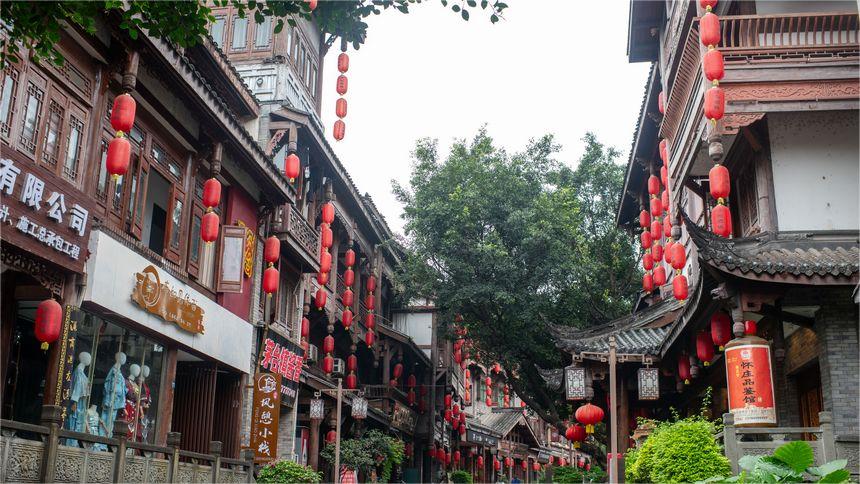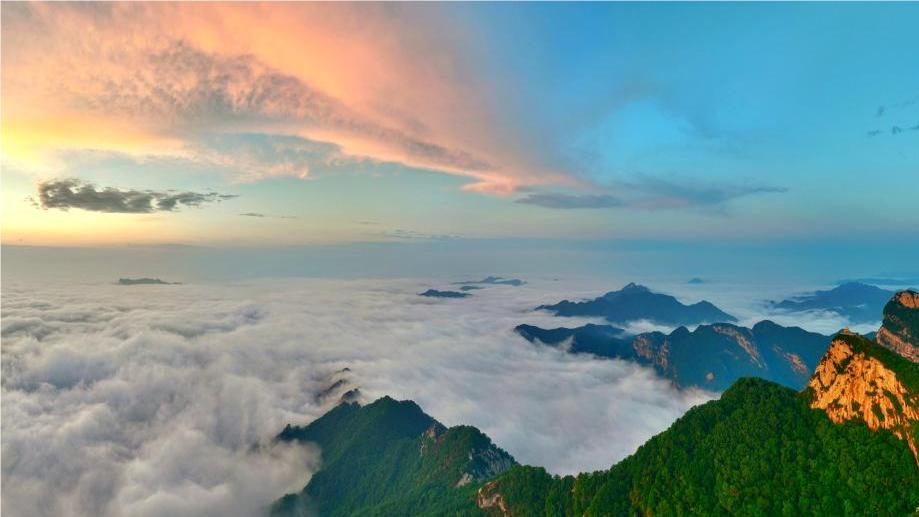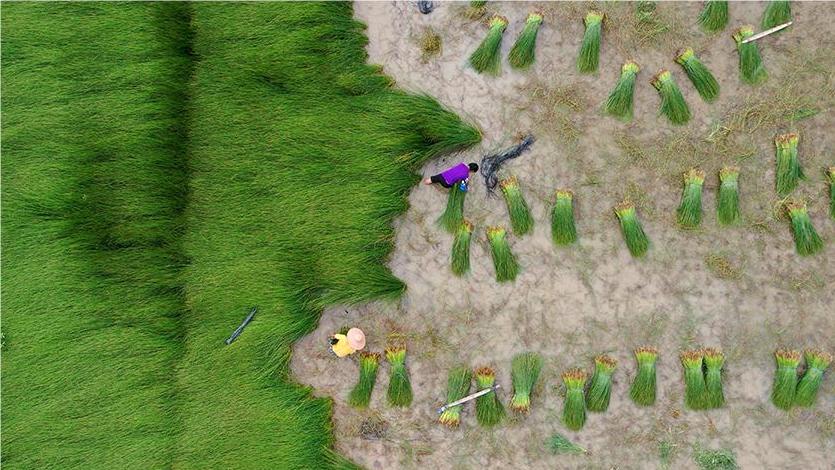In pics: Archaeological Ruins of Liangzhu City park in Hangzhou, E China
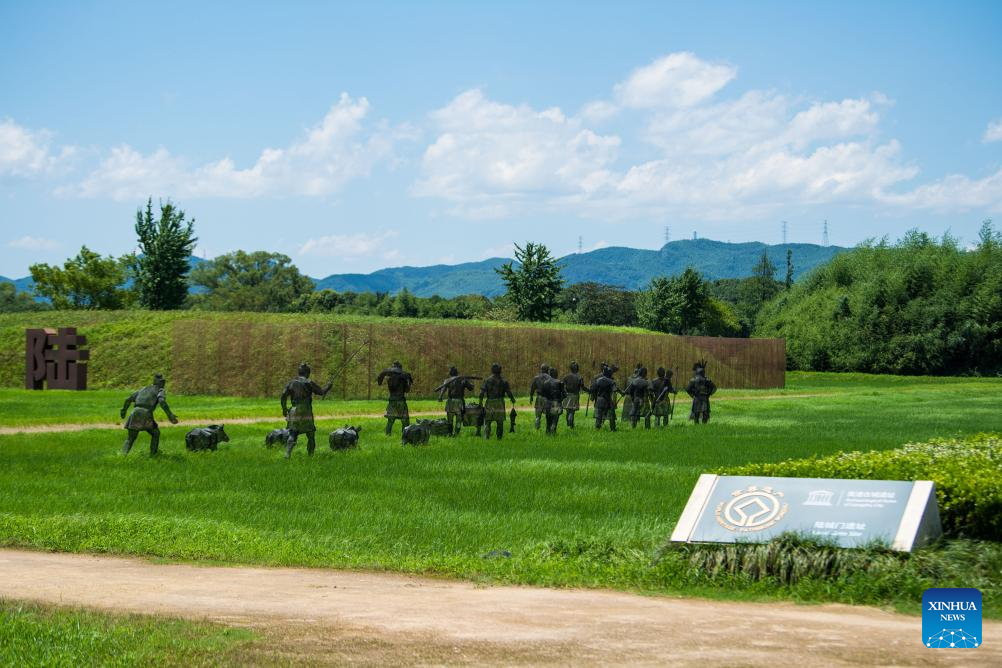
This photo taken on July 4, 2024 shows the Land Gate Site at the Archaeological Ruins of Liangzhu City park in Hangzhou, capital city of east China's Zhejiang Province. The Archaeological Ruins of Liangzhu City, located in east China's Zhejiang Province, have gained worldwide recognition as bearing testimony to the existence of at least 5,000 years of Chinese civilization. This year marks the 5th anniversary of its inscription on the World Heritage List as a cultural site. (Xinhua/Jiang Han)
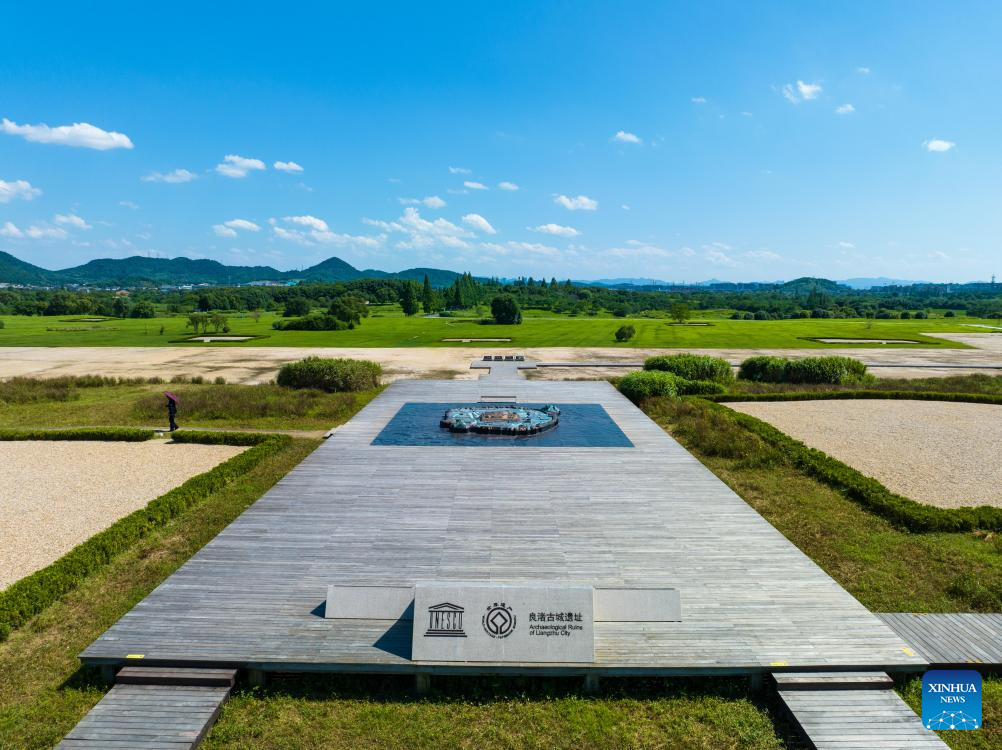
A drone photo taken on July 4, 2024 shows the Mojiaoshan Palace Site at the Archaeological Ruins of Liangzhu City park in Hangzhou, capital city of east China's Zhejiang Province. The Archaeological Ruins of Liangzhu City, located in east China's Zhejiang Province, have gained worldwide recognition as bearing testimony to the existence of at least 5,000 years of Chinese civilization. This year marks the 5th anniversary of its inscription on the World Heritage List as a cultural site. (Xinhua/Jiang Han)

People visit the Mojiaoshan Palace Site at the Archaeological Ruins of Liangzhu City park in Hangzhou, capital city of east China's Zhejiang Province, July 4, 2024. The Archaeological Ruins of Liangzhu City, located in east China's Zhejiang Province, have gained worldwide recognition as bearing testimony to the existence of at least 5,000 years of Chinese civilization. This year marks the 5th anniversary of its inscription on the World Heritage List as a cultural site. (Xinhua/Jiang Han)

People visit the Mojiaoshan Palace Site at the Archaeological Ruins of Liangzhu City park in Hangzhou, capital city of east China's Zhejiang Province, July 4, 2024. The Archaeological Ruins of Liangzhu City, located in east China's Zhejiang Province, have gained worldwide recognition as bearing testimony to the existence of at least 5,000 years of Chinese civilization. This year marks the 5th anniversary of its inscription on the World Heritage List as a cultural site. (Xinhua/Jiang Han)
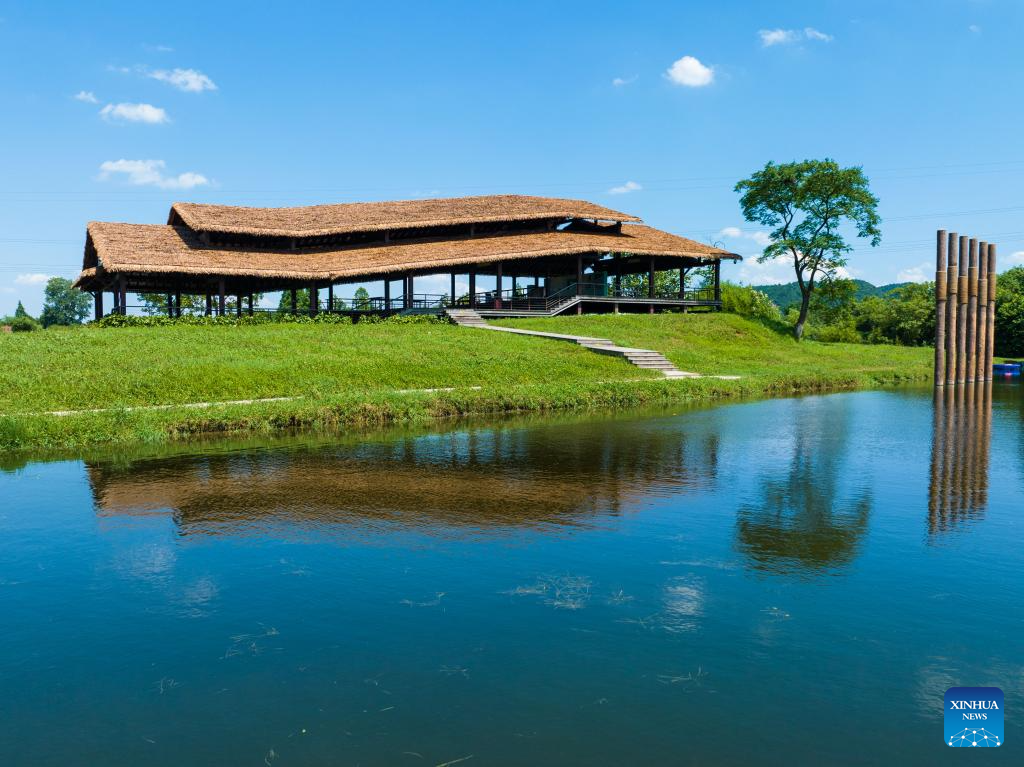
A drone photo taken on July 4, 2024 shows a display spot of Southern City Wall Site at the Archaeological Ruins of Liangzhu City park in Hangzhou, capital city of east China's Zhejiang Province. The Archaeological Ruins of Liangzhu City, located in east China's Zhejiang Province, have gained worldwide recognition as bearing testimony to the existence of at least 5,000 years of Chinese civilization. This year marks the 5th anniversary of its inscription on the World Heritage List as a cultural site. (Xinhua/Jiang Han)

An aerial drone photo taken on July 4, 2024 shows the Land Gate Site at the Archaeological Ruins of Liangzhu City park in Hangzhou, capital city of east China's Zhejiang Province. The Archaeological Ruins of Liangzhu City, located in east China's Zhejiang Province, have gained worldwide recognition as bearing testimony to the existence of at least 5,000 years of Chinese civilization. This year marks the 5th anniversary of its inscription on the World Heritage List as a cultural site. (Xinhua/Jiang Han)

An aerial drone photo taken on July 4, 2024 shows the Archaeological Ruins of Liangzhu City park in Hangzhou, capital city of east China's Zhejiang Province. The Archaeological Ruins of Liangzhu City, located in east China's Zhejiang Province, have gained worldwide recognition as bearing testimony to the existence of at least 5,000 years of Chinese civilization. This year marks the 5th anniversary of its inscription on the World Heritage List as a cultural site. (Xinhua/Jiang Han)
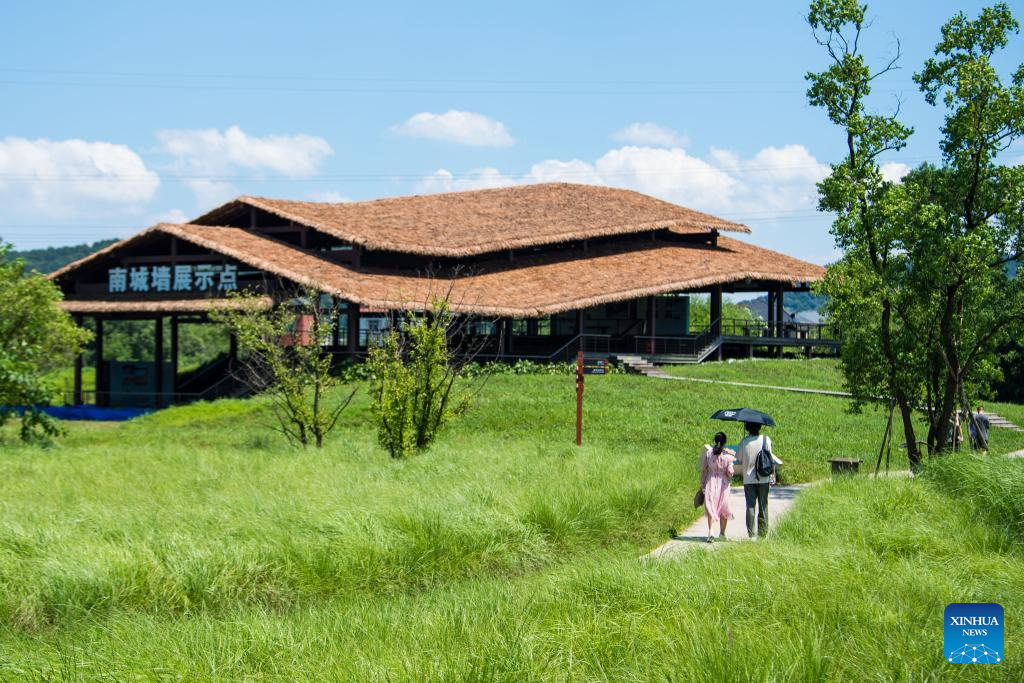
People visit a display spot of Southern City Wall Site at the Archaeological Ruins of Liangzhu City park in Hangzhou, capital city of east China's Zhejiang Province, July 4, 2024. The Archaeological Ruins of Liangzhu City, located in east China's Zhejiang Province, have gained worldwide recognition as bearing testimony to the existence of at least 5,000 years of Chinese civilization. This year marks the 5th anniversary of its inscription on the World Heritage List as a cultural site. (Xinhua/Jiang Han)

A drone photo taken on July 4, 2024 shows a display spot of Southern City Wall Site at the Archaeological Ruins of Liangzhu City park in Hangzhou, capital city of east China's Zhejiang Province. The Archaeological Ruins of Liangzhu City, located in east China's Zhejiang Province, have gained worldwide recognition as bearing testimony to the existence of at least 5,000 years of Chinese civilization. This year marks the 5th anniversary of its inscription on the World Heritage List as a cultural site. (Xinhua/Jiang Han)
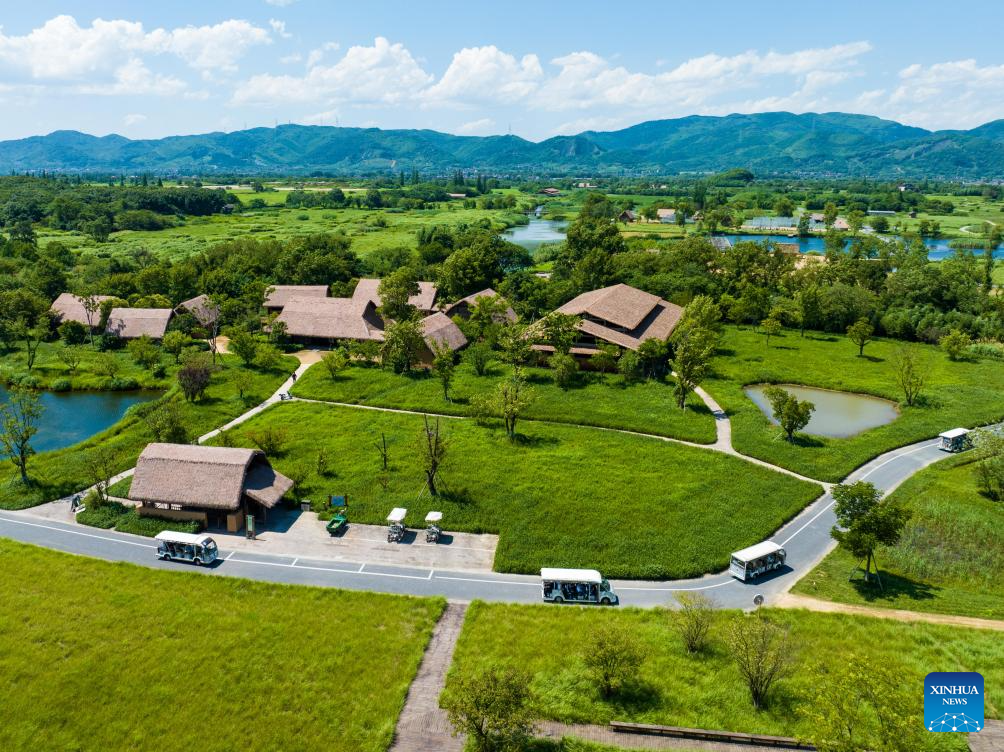
An aerial drone photo taken on July 4, 2024 shows people taking sightseeing buses at the Archaeological Ruins of Liangzhu City park in Hangzhou, capital city of east China's Zhejiang Province. The Archaeological Ruins of Liangzhu City, located in east China's Zhejiang Province, have gained worldwide recognition as bearing testimony to the existence of at least 5,000 years of Chinese civilization. This year marks the 5th anniversary of its inscription on the World Heritage List as a cultural site. (Xinhua/Jiang Han)

This photo taken on July 4, 2024 shows the Chizhongsi Granary Site at the Archaeological Ruins of Liangzhu City park in Hangzhou, capital city of east China's Zhejiang Province. The Archaeological Ruins of Liangzhu City, located in east China's Zhejiang Province, have gained worldwide recognition as bearing testimony to the existence of at least 5,000 years of Chinese civilization. This year marks the 5th anniversary of its inscription on the World Heritage List as a cultural site. (Xinhua/Jiang Han)

People visit the Fanshan Cemetery Site at the Archaeological Ruins of Liangzhu City park in Hangzhou, capital city of east China's Zhejiang Province, July 4, 2024. The Archaeological Ruins of Liangzhu City, located in east China's Zhejiang Province, have gained worldwide recognition as bearing testimony to the existence of at least 5,000 years of Chinese civilization. This year marks the 5th anniversary of its inscription on the World Heritage List as a cultural site. (Xinhua/Jiang Han)
Photos
Related Stories
- Researchers unveil how ancient Denisovans survived on Qinghai-Xizang Plateau
- Well-preserved murals found in millennia-old Chinese tomb
- Visiting archaeological sites becomes new cultural tourism trend in China
- Ancient temple excavation gains progress by joint Egyptian-Chinese archaeological mission
- Artifacts from east China's Shandong Province debut in Hong Kong
- China to develop more world-class archaeological institutions over next decade
Copyright © 2024 People's Daily Online. All Rights Reserved.






